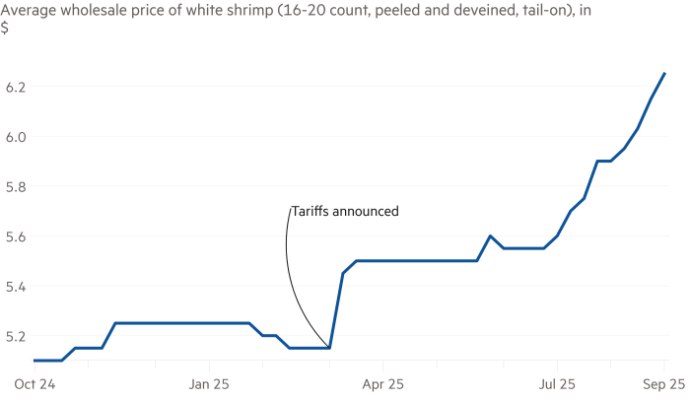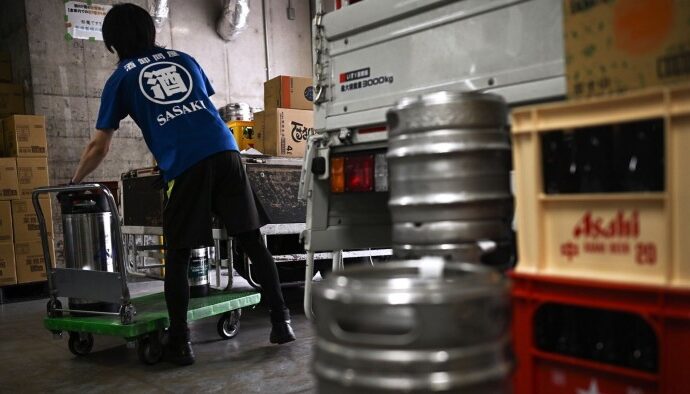Unlock the Editor’s Digest for free
Roula Khalaf, Editor of the FT, selects her favourite stories in this weekly newsletter.
China and the Philippines traded blame after Chinese attempts to block a Philippine supply mission to a military outpost led to two ship collisions on Sunday, escalating the territorial dispute between the countries in the South China Sea.
Both countries accused the other of illegal acts on Monday over the confrontation near Second Thomas Shoal, a sandbank inside the Philippines’ exclusive economic zone. Manila has stationed a small group of soldiers on a second world war-era former US warship that was intentionally run aground on the shoal in 1999.
According to drone footage released by the Philippine coastguard, a Chinese coastguard vessel cut in front of the bow of a small wooden ship, causing it to hit its side. A Chinese maritime militia boat later bumped a Philippine coastguard vessel, Manila said. Neither side reported injuries.
“What happened yesterday was a serious and egregious violation of international law,” said Philippine defence secretary Gilbert Teodoro, calling the incident an escalation of China’s “expansionist and aggressive action”.
The Chinese embassy in Manila lodged a protest with the Philippine foreign ministry, claiming the shoal was in Chinese territory and accusing Philippine ships of “trespassing”. It urged Manila to “tow away the illegally grounded warship as soon as possible” and demanded the Philippines abandon control of the sandbank.
Beijing and Manila have feuded over the outpost for months, with China dispatching a growing number of coastguard ships and maritime militia vessels to disrupt regular Philippine rotation and resupply missions.
China’s tactics have also become more assertive. In February, the Philippines accused a Chinese ship of using a laser to temporarily blind a crew near the shoal. In early August, a Chinese coastguard vessel targeted Philippine ships with a water cannon, forcing them to abandon a resupply mission.
The two collisions on Sunday marked a further increase in tensions, raising the spectre of conflict that could drag in the US, the Philippines’ treaty ally.
“Washington is growing increasingly concerned about an unmanageable crisis around Second Thomas Shoal,” said John Bradford, executive director at the Yokosuka Council on Asia-Pacific Studies. “At the same time, a sizeable chunk of the DC policy elite are directly or indirectly egging the Philippines on as a part of the effort to stand up to China’s unlawful aggression.”
The US state department denounced China’s actions as “dangerous and unlawful” and reaffirmed that its mutual defence treaty with the Philippines extended to armed attacks on the country’s forces, including the coastguard anywhere in the South China Sea.
China adopted a law in 2021 authorising its coastguard to take “all necessary measures, including the use of weapons” when fighting “illegal infringement on sovereignty”, raising international concerns about the possibility of open conflict in the region.
But security analysts said guns were not the only next step available to China on the escalation ladder.
Ja-Ian Chong, assistant professor at the National University of Singapore, said Chinese coastguard ships could use other non-lethal means, such as rams, “devices that produce very loud sounds” or that “jam the propellers of vessels” to increase pressure on the Philippines.
“Were there to be shots fired, this would put things in a completely different place, and I’m not sure China wants to go there,” said Raymond Powell, director of SeaLight, an initiative at Stanford University that focuses on maritime grey-zone operations
Powell said Beijing’s main goal was to block the Philippines from transporting material to maintain the decaying warship for long enough that the outpost broke apart by itself. “I think that China will remain constrained by concerns about the mutual defence treaty.”


